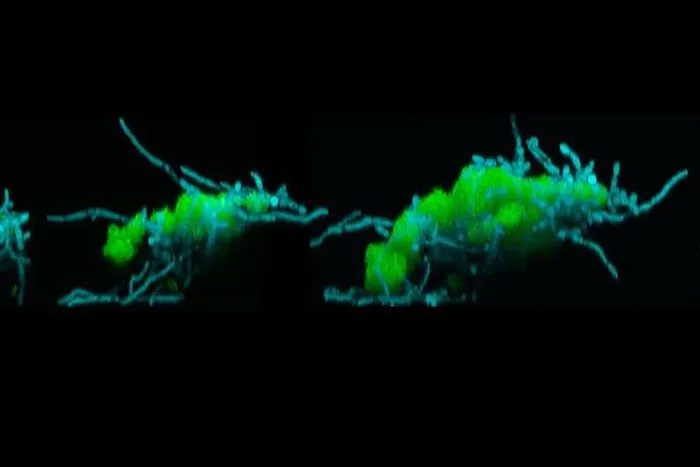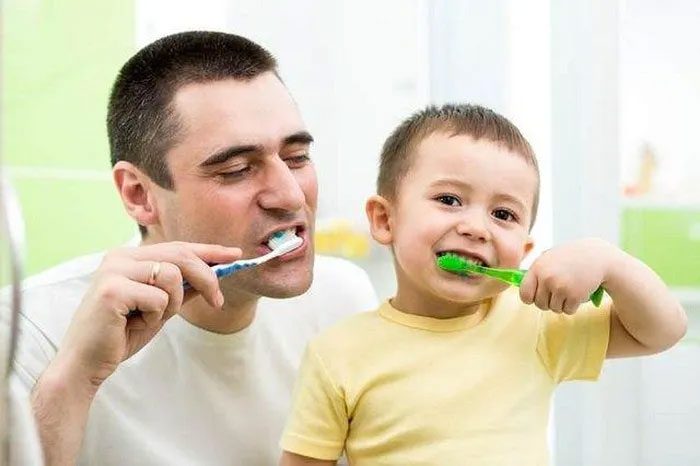Another new motivation for us to brush our teeth more regularly every day.
Scientists have discovered that bacteria and fungi responsible for tooth decay in saliva can combine to form a real “superorganism”, which can then grow appendages to crawl and even jump from one tooth to another.
This finding comes from a research team led by scientists at the University of Pennsylvania’s School of Dental Medicine. They made a surprising discovery while studying saliva samples from children with severe tooth decay. The researchers found that two species linked to cavity formation – the bacterium Streptococcus mutans and the fungus Candida albicans – had actually combined into clusters.

Microscopic image of the newly discovered “superorganism,” formed from bacteria (green) attached to fungal filaments (blue).
These clusters, or assemblies, consist of communities of bacteria bound together with a network of fungal filaments, all held together by a material known as extracellular polymer. This gives the bacteria better resilience compared to either species on their own, allowing them to adhere to teeth more effectively and increasing their resistance to antibiotics like those found in toothpaste.
The research team then cultured them in the lab on tooth-like material, incubating them in human saliva and observing them under a microscope to record their activities in real time. That’s when truly strange behaviors began to emerge. Although neither species can move independently, these combinations can use their network of fungal filaments to “crawl” across the surface of teeth at speeds exceeding 40 microns per hour. Even more bizarre is their ability to jump over distances greater than 100 microns. To put this into perspective, if they were the size of a frog, they could jump four times farther than a frog.
“They have many things that we call ’emergent functions,’ which provide new benefits to this assembly that neither could achieve on their own,” said Hyun Koo, a co-author of the study. “It’s almost like a new organism – a superorganism – with new functions.”

Another reason to brush your teeth more frequently every day.
The research team stated that this new ability to move helps the bacteria reside on teeth more effectively, and in tests on real human teeth, they found that cavities spread more rapidly with the development of these clusters.
The researchers noted that finding ways to prevent the formation of these assemblies could be a crucial strategy for preventing tooth decay in children.





















































